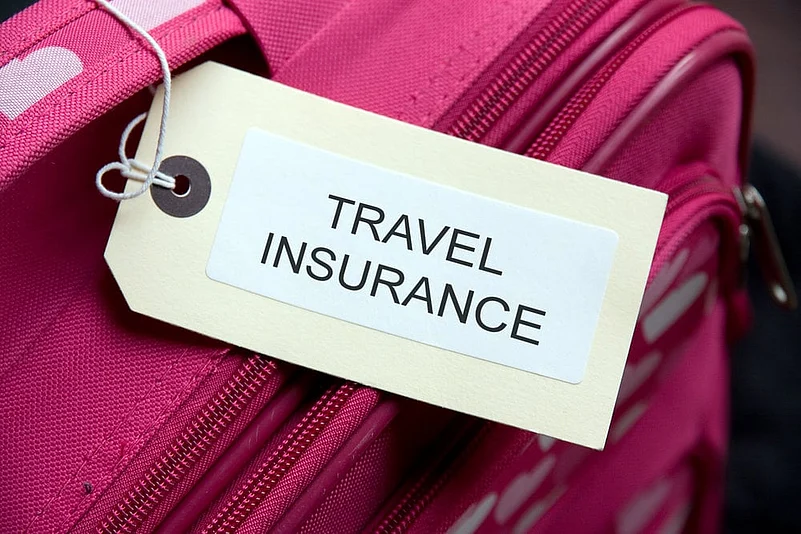Indian travelers have created waves this year with their travel insurance and destination choices. Right from short-haul vacations in Asia to high-end adventures in Europe, Indian travelers have not only mapped many destinations with their footprints but showed a greater awareness when it comes to safety nets that travel insurance provides.
Asia, at 51 per cent, became the most preferred travel region for Indians pertaining to some affordable, but foreign destinations, like Thailand, Vietnam, and Malaysia that have topped the list. For those with a taste for high-end experiences, Japan stands out, though it accounts for a modest 2 per cent of policies.
A recent report by Policybazaar.com, an online insurance marketplace, shows that Thailand alone grabbed 12 per cent of the share wherein its appeal soared mainly during the winter months. The report notes that travelers are drawn to its tropical allure and adventure opportunities with around 40 per cent opting for sports coverage when traveling there.
UAE, on the other hand, saw most Indian traveler footprints during the festive months of Diwali and New Year, with travel insurance at 11 per cent. Its combination of leisure, shopping, and mandatory visa-linked insurance makes it a preferred choice for travelers.
Europe, particularly the Schengen region, including destinations like the United Kingdom (4 per cent), Germany (4 per cent), and France (2 per cent), accounted for 19 per cent of policies, driven by visa norms and extended vacations.
The USA, at 4 per cent, also drew Indian travelers, topped mainly by family visits and summer travelers who prioritise high insurance coverage due to its expensive healthcare.
Worldwide travel policies, excluding the US/Canada, accounted for 19 per cent, while Africa remains a niche market with 2 per cent of policies focused on specific safari or business trips.
Comprehensive Coverage In Demand
It seems that Indian travelers are showing a preference for higher coverage in their travel insurance policies. The plans offering $250,000 (around Rs 2 crore) now account for 52 per cent of purchases. This shift is highly reflective of a growing awareness of medical expenses abroad.
Meanwhile, policies worth $100,000 remain popular for short, budget-friendly trips, making up 27 per cent of total purchases.
Over the past two years, the demand for higher sum-insured policies has surged by 30 per cent. This shift was especially evident among those visiting regions with expensive healthcare systems, like the USA and Europe.
Extended Trips And Preference For Add-ons
The report finds that 10-15 day vacations dominate, however extended trips are on the upswing now.
10–15 days trips account for 55 per cent of policies, catering to short-haul vacations among middle-income Indian travelers.
25–30 days account for 25 per cent of policies, aligning with visa norms and longer vacation preferences.
35- 40 days trip makes up 20 per cent of policies, focusing on family visits or study tours with extended durations.
Popular add-ons: The data notes a surge in coverage in following add-ons on travel insurance:
Refund of Visa Fees was adopted in 20 per cent of policies for destinations like UAE, Europe, and Canada, driven by stringent visa rules.
Adventure Sports Coverage gained traction as an add-on with 30 per cent of policies bought for Thailand, Bali, and similar regions.
Cyber Fraud Cover also witnessed a 10 per cent YoY rise, now included in 15 per cent of policies. The adoption of this policy add-on reflects the concerns of travelers over financial safety during digital transactions even during travels.
Age-wise Travel Insurance Trends
The report notes that travelers aged over 60 account for 30 per cent of policy purchases, typically opting for comprehensive coverage that includes PED (Pre-Existing Disease) coverage.
Meanwhile, the 30–60 age group, the largest cohort, accounts for 45 per cent of policies, opting for plans with modern benefits like instant claims for flight delays. Younger travelers under 30 prefer more affordable options but often add adventure sports coverage.
A notable trend is that claims reporting has grown by 25 per cent, driven by simplified processes and quicker claim settlements.
Women Travelers On the Rise
Although men still lead travel insurance purchases, with a 58 per cent share, the gap is narrowing. Women now account for 42 per cent of policies bought, marking a significant increase in financial awareness and proactive travel planning among female travelers.
Trends in Trip Planning
The just-in-time approach to purchasing travel insurance remains popular. 60 per cent of travelers buy their policies 5 to 10 days before departure. However, geography plays a role here.
For nearby destinations in Asia, travelers often wait until 3 to 5 days before departure. Meanwhile, for those heading to Europe, where mandatory visa-linked insurance is required, travelers purchase their policies 30 to 45 days in advance. For trips to the US or Canada, the window extends to 10 to 15 days.
Single-trip policies continue to dominate, reflecting travelers’ preference for affordability over long-term investments.
Medical Costs Influencing Travel Coverage
The report highlights that one of the most significant influences on travel insurance choices has been the escalating cost of healthcare abroad.
“Higher medical expenses in developed nations have led 50% of travelers to choose $500,000 policies,” the report states.
Typically, a $250,000 policy offering Rs 2 crore equivalent coverage safeguards against unforeseen expenses effectively. This reflects that travelers, aware of rising global medical costs, are touring with due preparation against unforeseen expenses during international trips.
















